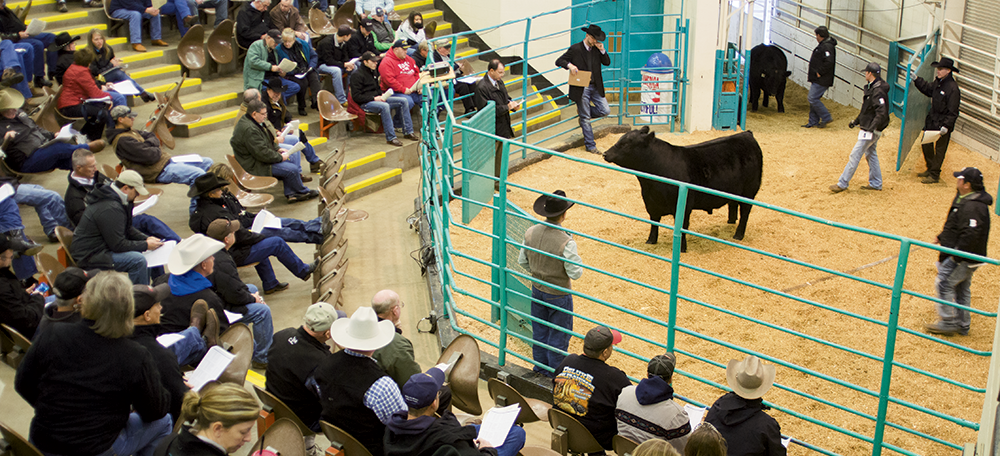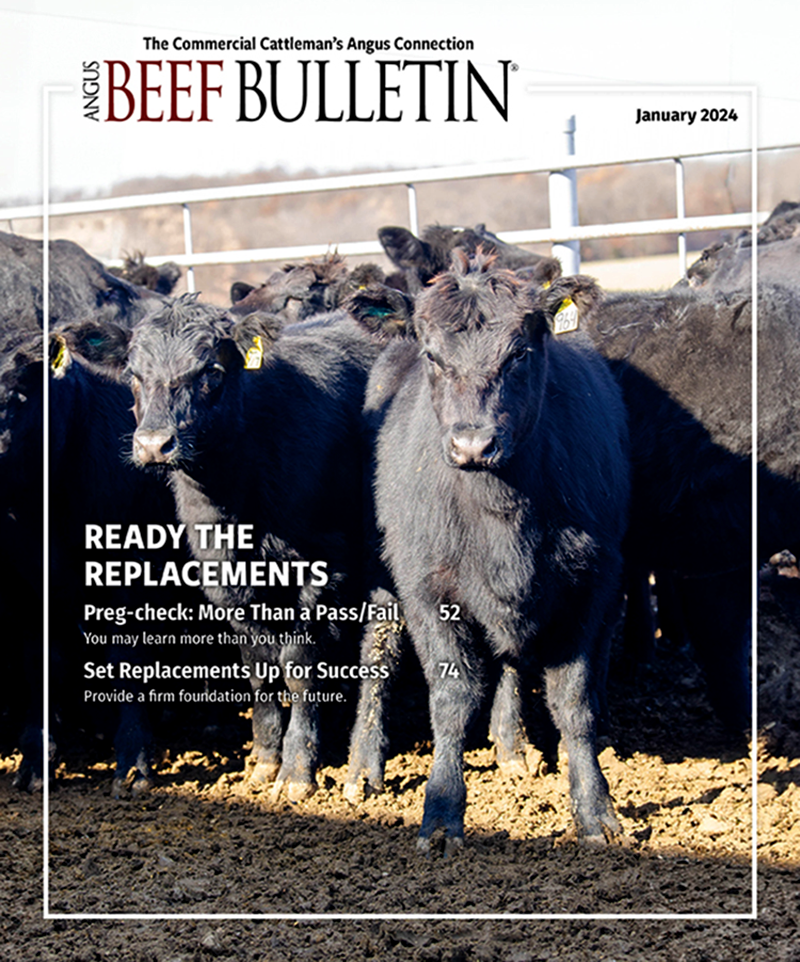
Selecting a Bull? Ask the Right Questions
Which bull is right for you depends on goals, marketing options and your cows.
Bull selection is one of the most economically important jobs in a cattle operation. Whether selecting a bull for natural service or artificial insemination (AI), the effect of that bull’s genetics in the herd is long-lasting. In fact, approximately 87.5% of the current calf crop genetics can be explained by the last three bulls used in the operation, further highlighting the long-lasting influence of sire selection.
In general, an AI bull will have far more offspring compared to a natural-service bull in one breeding season. However, a natural-service bull will stay in the herd approximately four years. The primary job of a bull is to get cows pregnant. Research has reported that the economic value of reproduction (getting cows pregnant) is at least five times more important than growth performance and at least 10 times more important than beef quality traits.
That’s not to say that growth performance and meat quality aren’t important. Rather, it emphasizes that if a cow doesn’t get pregnant, calve and wean a calf, there is no potential for growth and meat quality, since that calf was never born.
In the last USDA survey report, 92% of beef cows and 76% of beef heifers were exposed only to natural service (no AI performed). These percentages drive home the point that selecting the correct bull for a beef operation is of extreme importance, since in most cases only a natural-service bull is being used.
Currently, there are an overwhelming number of expected progeny differences (EPDs) and multi-trait indexes available to use when picking out a bull. Selecting which tool is relevant for your operation can be a difficult job. Considering all the EPDs and indexes available with the question of “Which is the best bull?” creates, in some cases, an overwhelming situation. However, the situation can be simplified by answering the questions below and remembering that the best bull depends on the situation.
When selecting a bull, one should first look at their cow herd. The best bull will vary for each operation and their goals. I encourage you to answer the following questions before you try to find the best bull.
What is your operation’s goal? Is it to sell weaned calves, sell yearling/background calves, retain ownership and sell finished cattle, and/or sell replacement females?
From where do you source replacement females? Replacement heifers may be selected from the cow herd and developed at home or at a custom-heifer-development center. Or, replacements may be purchased as open heifers, pregnant heifers, open cows or pregnant cows.
Further, understanding your marketing goals and plan is important. Selecting when you want to market your animals and understanding what is the best market for your operation is key. Without changing any management, is there a niche market that your product can be sold for at a higher price? Are there any management practices that can be changed without great cost that will allow your product to fit a niche market and capture more money? In other words, we have many different niche markets available that can bring a premium to your product. As an industry we should take advantage of those niche markets if that means more profit. Before changing any management practices to fit a niche market, communicate with your marketing agency (who buys your product) to understand the availability of that market in your region.
Next, what is your cow herd type, size, genetics and color (if hide color matters for your market)? British, Continental, exotic or crossbred? Large-, moderate- or small-framed? Maternal- or terminal-trait females?
This last question will help you understand in an objective way where you are in terms of your cow herd. With this information and your marketing goals, you can figure out what needs to be improved and what needs to be maintained when moving to the next step — the actual bull selection.
We have established the product that will be sold, the marketing strategy for the product, and the cow herd that we currently have. Now that you gathered all this information, you can make an appropriate decision on selection of the “best bull.” The “best bull” is the bull that will complement your cow herd phenotype and genetics to produce a calf crop that will bring the best product to the market of your choice. That bull selection will start by determining the breed of choice, followed by determining what set of EPDs and/or selection indexes will best fit.
Using the tools
Let’s use the following scenario as an example: The operation retains replacement heifers; sells excess heifers and steers at weaning; breeds in the spring; niche markets aren’t available; black hide pays better; the cow herd is of moderate frame, British and black-hided; and the bull breed of choice is Angus.
When this operation is selecting a bull that would improve the current herd, the primary selection could be a maternal index like $M (maternal weaned calf value). Other options for this scenario would be $W (weaned calf value) and $C (combined value) instead of $M. After selecting the best $M bulls, this operation could evaluate the hair shedding (HS) EPD as a secondary selection criterion, since we are in the fescue belt and their breeding season is during the spring (warmer weather).
If the bull will be used on heifers, some emphasis could be placed on calving ease direct (CED). However, it is important to understand that CED is part of the $M calculation. If this operation decides to look at individual EPDs instead of indexes, Angus EPDs that would be economically relevant would be CED, weaning weight (WW), docility (DOC), Claw, Angle, HS, heifer pregnancy (HP), calving ease maternal (CEM) and Milk. Identifying which one of those is more important and selecting a bull that would fit all the minimum criteria established would be extremely hard.
Further, evaluating the bull’s phenotype is important, making sure the numbers match the phenotype. Look at feet and leg structure, and make sure that the bull’s height (frame score) is appropriate for the operation goals. In this scenario a moderate-framed bull would be a great option to maintain a moderate cow size.
We are in the midst of “bull-buying season” in the state of Tennessee. I hope this article can assist you in asking the right questions to figure out what you need to be looking for when buying your next bull, whether for AI or natural service.
Last but not least, remember that all bulls must pass a breeding soundness exam (sometimes referred to as a BSE) before each breeding season, regardless of the age of the bull and if he has been used successfully in previous breeding seasons. Keep in mind that performing a breeding soundness exam has an economic benefit-to-cost ratio of 17:1. Getting the cows pregnant is the first job!
Editor’s note: Saulo Zoca is assistant professor and beef cattle reproduction specialist in the Department of Animal Science at the University of Tennessee. [Lead photo by Kasey Brown.]



